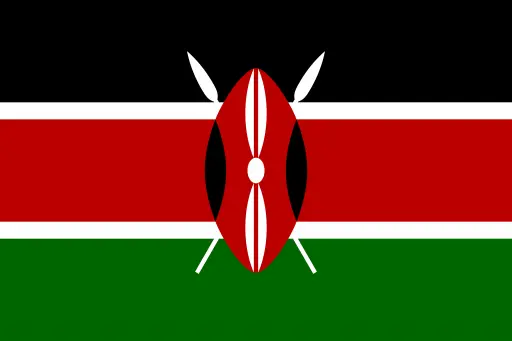
Kenya
Kenya is a strong player in both the East African Community (EAC) and Common Market for Eastern and Southern Africa (COMESA) regional economic communities. The EAC is also a Customs Union. Following its accession to the General Agreement on Tariffs and Trade (GATT) in 1964, Kenya became a member of the World Trade Organization in 1995.
Kenya has a trade agreement with the European Union that spans duty reductions and no quotas. The preferences span all industrial products as well as many other products. Other trade agreements and bilateral agreements that Kenya is included in are with Argentina, Bangladesh, Bulgaria, China, Comoros, Democratic Republic of Congo (DRC), Djibouti, Egypt, Hungary, India, Iraq, Lesotho, Liberia, Netherlands, Nigeria, Pakistan, Poland, Romania, Russia, Rwanda, Somalia, South Korea, Swaziland, Tanzania, Thailand, Zambia, and Zimbabwe. An European Union Economic Partneship Agreement signed in 2023, will come into force once ratified. The African Continental Free Trade Agreement; the United States of America’s African Growth and Opportunity Act and the Trade and Investment Framework Agreement also apply. A Strategic Trade and Investment Partnership Agreement with the United States of America is repotedly in the final stages of negotition.
Furthermore, the Generalized System of Preferences (GSP) applies that gives the country preferential treatment in terms of exports to certain countries. The GSP’s overall framework and rules are administered by the WTO, with individual countries manageing their own preferences. Countries could include: Armenia; Australia; Belarus; Canada; the European Union; Iceland; Japan; Kazakhstan; New Zealand; Norway; the Russian Federation; Switzerland; Turkey; United Kingdom; and the United States of America.
Cosmetics:
Different types of cosmetics are regulated differently in Kenya, notably by the Kenyan Bureau of Standards (KEBS) and the Minstry of Health’s Pharmacy and Posions Board (PPB). A draft Guideline for Regulation of Cosmetic Products (Rev, No. 0 dated June 2024) was released in 2024 for public comment. The document, released by the PPB had an effective date of 2022 and a review date of 2026 included. CTFA submitted detailed input on the draft Guideline, enaged with international and local stakeholders and awaits feedback from PPB.
In the draft PPB Guideline, cosmetics are defined as “any substance or preparation or device intended to be applied to the human body by means of rubbing, pouring, steaming, sprinkling, spraying on or otherwise applied to the human body or any part thereof for the purpose of cleansing, improving or altering the complexion, skin, hair, teeth or mucous membranes of the oral cavity without affecting the body’s structure or function.”.
A further defintoin of that is used in the regulation of cosmetics is: “any substance or mixture intended to be placed in contact with the external parts of the human body (epidermis, hair system, nails, lips and external genital organs) or with the teeth and the mucous membranes of the oral cavity with a view exclusively or mainly to cleaning them, perfuming them, changing their appearance, protecting them, keeping them in good condition or correcting body odours.”.
As CTFA understands the current discussions, there could be three classes of cosmetics deignated in Kenya:
cosmetics with medical/therapeutic claims;special cosmetics – “while making no explicit medical claim, are marketed with claims/promises to deliver for preventing or interfering with normal operation of a physiological function whether permanently temporarily or whether by way of terminating, reducing, postponing or increasing or accelerating operation of the functions in human beings”; andgeneral cosmetics.
Clearly the regulatory framework for cosmetics is in flux in Kenya, although their continued regulation through standards and other mechanisms is very likely.
